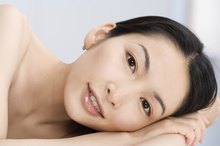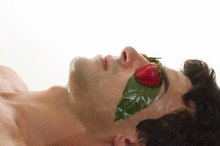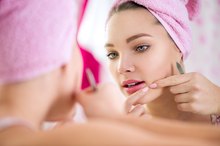What does fact checked mean?
At Healthfully, we strive to deliver objective content that is accurate and up-to-date. Our team periodically reviews articles in order to ensure content quality. The sources cited below consist of evidence from peer-reviewed journals, prominent medical organizations, academic associations, and government data.
- NCBI: Synthesis, Characterization, and Antimicrobial Activity of Kojic Acid Grafted Chitosan Oligosaccharide
- NCBI: Synthesis, Characterization, and Antimicrobial Activity of Kojic Acid Grafted Chitosan Oligosaccharide
The information contained on this site is for informational purposes only, and should not be used as a substitute for the advice of a professional health care provider. Please check with the appropriate physician regarding health questions and concerns. Although we strive to deliver accurate and up-to-date information, no guarantee to that effect is made.
Does Kojic Acid Cause Acne?
Kojic acid is most commonly used as a skin-lightening agent, thanks to its ability to interfere with the production of melanin. Those with acne-prone skin who wish to apply it to dark facial spots may worry about breakouts, but there’s no need for caution: Kojic acid is also an antibacterial agent, making it an ingredient that can be used in the treatment of acne. While skin sensitivities range from person to person and exceptions certainly exist, as a general rule, kojic acid is considered a treatment -- not a cause -- of acne.
Multipurpose Product
Because kojic acid also has antimicrobial properties, it interrupts the reproduction of bacteria 1. Similar in some ways to glycolic or salicylic acid for its exfoliating abilities, this ingredient works to gently slough the skin’s surface; greater cell turnover leads to clearer pores and less breakouts. Because of its many applications, kojic acid could be considered a wonder product. Not only can it be used as an acne treatment and a less-irritating alternative to the skin-bleaching agent hydroquinone, but it also is classified as an antioxidant, which works to mitigate the effects of skin-aging free radicals.
- Because kojic acid also has antimicrobial properties, it interrupts the reproduction of bacteria 1.
- Similar in some ways to glycolic or salicylic acid for its exfoliating abilities, this ingredient works to gently slough the skin’s surface; greater cell turnover leads to clearer pores and less breakouts.
Related Articles
References
Writer Bio
Stacey Kole worked for five years as managing editor of the style and pop-culture magazine Savvy, where she traveled coast-to-coast covering all things fashion and beauty. In addition to daily writing and editing duties, she interviewed and penned cover stories on such celebrities as Avril Lavigne, Julianne Hough and Vanessa Hudgens. Stacey holds a Master's Degree in Education and currently writes for a number of online publications.








